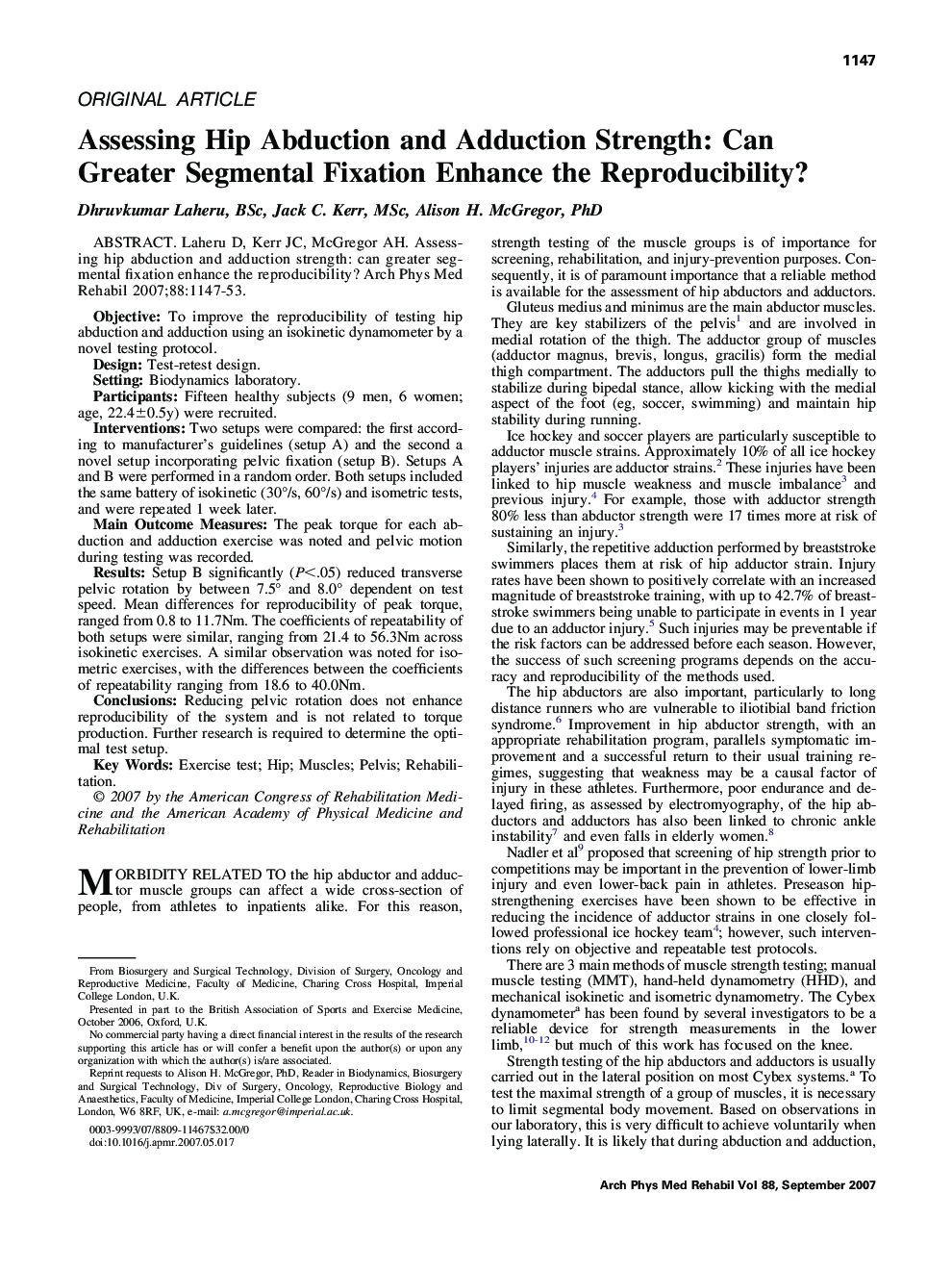| Article ID | Journal | Published Year | Pages | File Type |
|---|---|---|---|---|
| 3452771 | Archives of Physical Medicine and Rehabilitation | 2007 | 7 Pages |
Laheru D, Kerr JC, McGregor AH. Assessing hip abduction and adduction strength: can greater segmental fixation enhance the reproducibility?ObjectiveTo improve the reproducibility of testing hip abduction and adduction using an isokinetic dynamometer by a novel testing protocol.DesignTest-retest design.SettingBiodynamics laboratory.ParticipantsFifteen healthy subjects (9 men, 6 women; age, 22.4±0.5y) were recruited.InterventionsTwo setups were compared: the first according to manufacturer’s guidelines (setup A) and the second a novel setup incorporating pelvic fixation (setup B). Setups A and B were performed in a random order. Both setups included the same battery of isokinetic (30°/s, 60°/s) and isometric tests, and were repeated 1 week later.Main Outcome MeasuresThe peak torque for each abduction and adduction exercise was noted and pelvic motion during testing was recorded.ResultsSetup B significantly (P<.05) reduced transverse pelvic rotation by between 7.5° and 8.0° dependent on test speed. Mean differences for reproducibility of peak torque, ranged from 0.8 to 11.7Nm. The coefficients of repeatability of both setups were similar, ranging from 21.4 to 56.3Nm across isokinetic exercises. A similar observation was noted for isometric exercises, with the differences between the coefficients of repeatability ranging from 18.6 to 40.0Nm.ConclusionsReducing pelvic rotation does not enhance reproducibility of the system and is not related to torque production. Further research is required to determine the optimal test setup.
